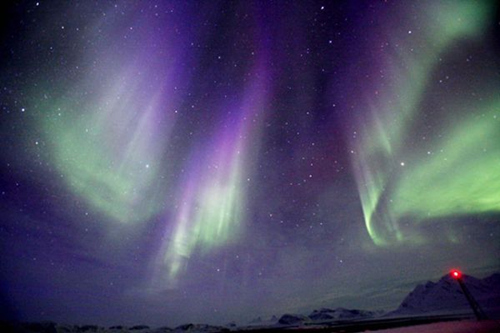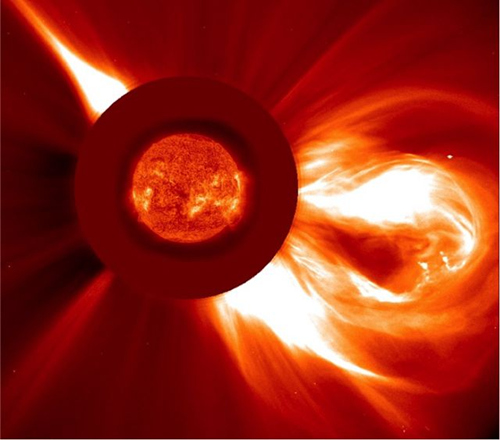【Xinhua】Chinese scientists probe mystery of solar storms

An aurora dancing in the sky reminds scientist Liu Ying of the skirt of a ballerina. But this poetic image belies a potential source of disaster.
How does a super solar storm, which can cause the most magnificent auroras, begin? Scientists are still mystified by it.
Liu Ying, a researcher at the State Key Laboratory of Space Weather of the National Space Science Center under the Chinese Academy of Sciences (CAS), has made an outstanding contribution to research on solar storms, and was recently awarded the Zhao Jiuzhang Science Prize, named after China’s space science pioneer.
Delivering a report at the award presentation, Liu said a super solar storm could cause trillions of dollars in damage, from which it could take four to 10 years to recover.

SDO satellite image of solar filament eruption
A super solar storm on Sept. 1, 1859 – the Carrington Event – first triggered research on solar storms. The Carrington Event caused colorful auroras that could be seen even in low latitude regions like Hawaii. It also caused the telegraph systems in northern America and Europe to break down.
The most recent solar storm happened on March 15, 2015. Although not a super storm, it caused the biggest geomagnetic storm on earth in a decade.
“Our research shows that the geomagnetic storm was caused by the interaction of two coronal mass ejections,” Liu said.
Understanding solar storms is important to China’s space development. The high-energy particle radiation of a solar storm could be carcinogenic for astronauts and damage electronic devices on a spacecraft, Liu said.
If the solar storm hit earth’s magnetosphere, it could trigger a geomagnetic storm and damage power grids, and navigation and telecommunication systems, said Liu.
In 2012, Japanese, European and Chinese scientists respectively found a remarkable increase of radioactive carbon-14 in tree rings and corals, which dated back to around 774 and 775 AD.
Scientists believe the phenomenon was caused by a super solar storm, after finding a record of splendid auroras on the night of Jan. 17 in 775 in historical documents from China’s Tang Dynasty (618-907). According to the documents, the auroras covered most of the sky above the northern hemisphere, and lasted for about eight hours.

Aurora above North Pole By Sun Wen Xinhua/China Features
Another super solar storm, on July 23, 2012, was regarded as “perfect” by scientists.
“We call it a ‘perfect storm’, because all the conditions aligned to create such a big storm,” said Liu.
He cooperated with scientists in the United States and Europe to observe the whole process of a super solar storm for the first time in history, and to identify the formation mechanism. Their research was published on the scientific journal, Nature Communications.
“Had the solar storm happened nine days earlier, it would have hit the earth, destroying power grids, satellites and GPS systems, causing huge losses,” Liu said.
U.S. scientists estimate the probability of a super solar storm in the coming decade at about 12 percent, while Japanese scientists say 6 percent. “We believe the probability could be from 5 percent to 10 percent, but it’s only a rough estimate.”

SOHO satellite image of coronal mass ejection
The formation of solar storms is attributed to the unstable process of the corona magnetic field. But it’s still difficult to observe the corona magnetic field, so the cause remains a mystery.
“Understanding the mechanism of a super solar storm and forecasting space weather is vitally important to modern civilization,” Liu said.
China plans to launch a Solar Polar Orbit Telescope (SPORT) and a Magnetosphere, Ionosphere and Thermosphere mission (MIT) in the coming decade.
“We are looking forward to China’s own satellite to better observe and study the solar storm and space weather,” Liu said.


